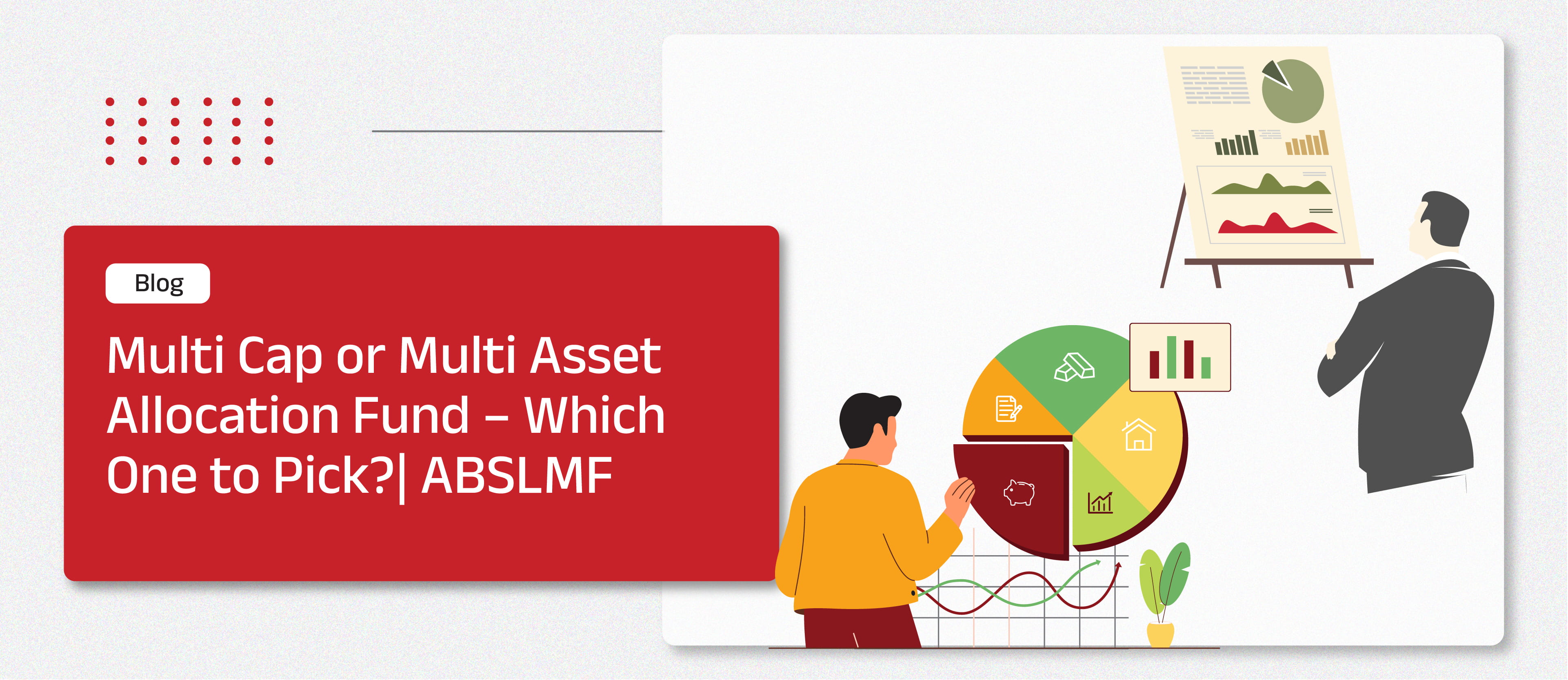-
Our Products
Our FundsFocus Funds
-
Self Care
Self-ServiceFind InformationWays To TransactPartner Solutions
-
Downloads
- Learnings
- About Us
-
More
-
Shareholders
-
Shareholders
-
Updates
-
-
SIP Calculators
- Back
-
Shareholders
Multi-Cap Fund Vs Multi-Asset Allocation Fund

Jun 30, 2025
10 min
0 Rating
Do you also stumble upon names like “Multi Cap Fund” and “Multi Asset Allocation Fund” while searching for fund options? Both sound similar in the sense that they offer multiple things, but what does that even mean? Are they the same?
So, you are planning to invest but are stuck between a multi-cap fund and a multi-asset allocation fund. Both sound promising, both offer “diversification”, but which one is right for you? Should you pick one over the other? That depends.
Here’s a breakdown to give you the actual difference in a way that you will enjoy reading.
The Basics First
A clear insight into both types must start with the basics: multi-asset allocation and multi-cap fund meaning.
What is a Multi-Cap Fund?
A multi-cap fund is an equity mutual fund that invests in stocks of all market capitalisations. It is a diversified equity mutual fund investing across large, mid, and small-cap stocks.
According to SEBI rules, it must invest:
At least 25% in large-cap stocks
25% in mid-cap stocksp>
25% in small-cap stocks
The remaining 25% is left to the fund manager’s discretion. This structure helps in balancing risk and return across the market spectrum.
Let's take an example of the Multicap Fund. It follows this model and is known for a balanced approach within the equity segment.
What is a Multi-Asset Allocation Fund?
A multi-asset allocation fund is a type of hybrid fund. SEBI mandates it to invest in at least three asset classes, such as:
Equity
Debt
Gold (or other commodities)
Each asset class must have a minimum of 10% allocation. These funds are more flexible and balanced, dynamically shifting allocations based on market conditions.
A good example is the Multi Asset Allocation Fund. It does this by blending equity with debt and commodities to offer stability and steady growth.
Key Differences at a Glance
Feature |
Multi-Cap Fund |
Multi-Asset Allocation Fund |
Type |
Equity Fund |
Hybrid Fund |
Asset Mix |
Equity only (Large, Mid, Small cap) |
Equity, Debt, Gold (3+ asset classes) |
Return Potential |
High (long-term) |
Moderate and steady |
Flexibility |
Low (fixed 25% each segment) |
High (dynamic asset shifting) |
Ideal For |
Long-term growth seekers |
Stability + moderate returns |
SEBI Rule |
75% in equities (25% each cap) |
10% minimum in 3 asset classes |
|
|
|
Investment Objective
Multi-Cap Funds: Aim for high long-term returns by spreading investments across market cap segments. You get stability from large caps, growth from mid caps, and aggressive return potential from small caps.
Multi-Asset Allocation Funds: Designed for risk-averse investors. The goal is to lower risk by diversifying across asset classes. When equities are volatile, the fund may increase debt or gold holdings.
Investor Scenario Examples
1. Riya, 28 – Ambitious and Risk-Tolerant
Riya’s just started her career and wants aggressive long-term growth. She chooses a multi-cap fund to maximise capital appreciation over the next 10+ years.
2. Sameer, 45 – Family First
With two kids and financial responsibilities, Sameer prefers steady returns. He picks a multi-asset allocation fund to balance market gains with safer instruments like debt.
3. Meena, 35 – Cautious Beginner
New to mutual funds, Meena wants to explore equity while staying cautious. A multi-asset allocation fund offers her a stable, diversified entry point.
How Fund Managers Operate
Multi-Cap Funds:
Have a fixed equity structure—minimum 25% each in large, mid, and small caps. Fund managers tweak the remaining 25% based on market trends.
Multi-Asset Allocation Funds:
Much more dynamic. Managers can shift between equity, debt, gold, or other assets based on:
Inflation
Market rallies/crashes
Interest rate changes
Geopolitical news
This flexibility is equal to lower volatility and a smoother ride for investors.
Pros and Cons Recap
|
Multi-Cap Fund |
Multi-Asset Allocation Fund |
Pros |
|
|
Cons |
|
|
So, Who Should Choose What?
Ask yourself three questions:
1. What’s my risk appetite?
High = Multi Cap Fund
Low to moderate = Multi Asset Allocation Fund
2. What’s my investment horizon?
5–10 years or more = Multi Cap
3–5 years = Multi Asset Allocation
3. Do I want tax efficiency or portfolio balance?
For equity tax benefits and long-term gains → Multi-Cap
For diversification and a smoother market ride → Multi Asset Allocation
Quick Tip Before You Go
There is no overgeneralised solution in mutual fund investing. Both multi-cap and multi-asset allocation funds offer diversified exposure, but in very different ways. One targets market cap spreads, and the other spreads across asset types.
Invest smart. Choose the one that matches your journey, not someone else’s return chart. And if you are still unsure, it is absolutely okay to chat with a financial advisor before making a decision.
Mutual Fund investments are subject to market risks, read all scheme related documents carefully.





 1800-270-7000
1800-270-7000



